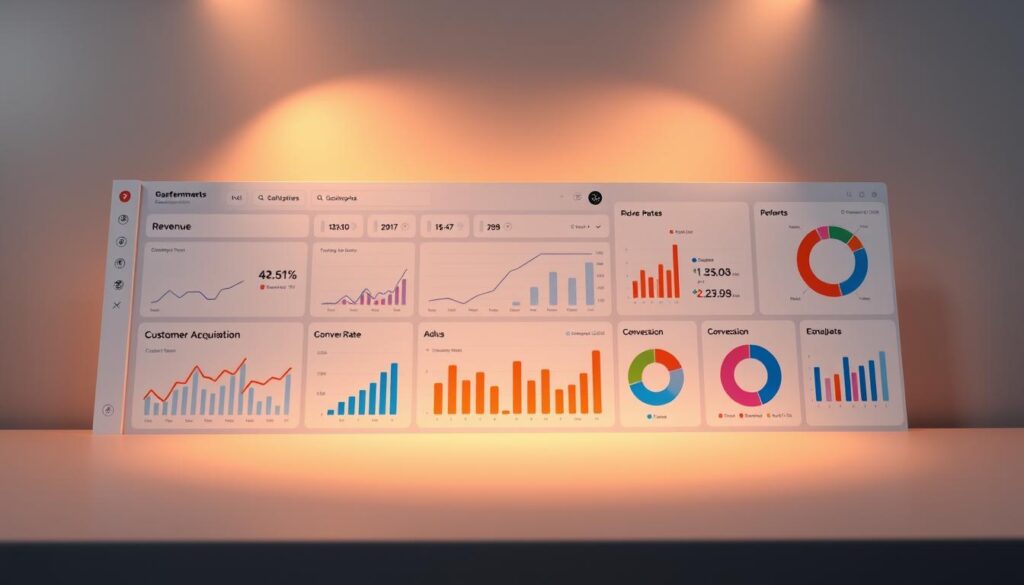Анунсиос
изпълнение matters more than ever in 2025 — but not as a magic fix. You’ll learn small, compound behaviors you can test today that protect attention and make steady impact.
Start with a clear order: anchor wake and sleep times, get morning sunlight, delay coffee 60–90 minutes, and try 90-minute focus blocks. Add creative stage moves like rehearsing with your gear and measured breathing to manage nerves.
Experiment with one idea at a time. Run short pilots for a week, log what happens, and decide by data. Use simple review habits — document outcomes, schedule 1:1s, and apply a basic rating scale — so changes are measurable and fair.
Use this checklist as a living system: begin with one change, track signals over time, and add layers when the basics feel stable. These Performance tips are practical, modest, and meant to help you move fast without overwhelm.
Start here: Why performance matters in 2025 and how to use this checklist
Begin by framing what matters now for your team and individual work. In 2025 constraints are tighter and expectations have shifted, so focusing on core habits gives the biggest returns over time.
Анунсиос
Use this checklist as a modular guide: pick one or two items each week and adapt them to your people and context. Run short trials, document results, and keep discussions factual and objective.
When you measure progress, favor simple, repeatable signals — number of 90-minute blocks done or cadence of reviews — instead of a lot of vanity metrics. Schedule a quiet space for team alignment and make sure no feedback is a surprise.
- Managers clarify criteria, share hiring signals, and remove blockers.
- Individuals take ownership of anchors like sleep windows and focus blocks.
- Start small, log experiments, and iterate rather than overhaul.
| Area | Manager role | Individual role |
|---|---|---|
| Reviews | Set clear criteria and schedule | Document progress and prepare examples |
| Workspace | Provide quiet space and resources | Choose a comfortable, low-distraction spot |
| Measures | Align metrics to company mission | Track simple, repeatable signals |
| Adaptation | Offer role-specific guidance | Adjust practices to your time and goals |
Sleep, light, and energy basics you can apply today
Simple routines—sunlight, timed caffeine, and gentle cardio—help stabilize your day. You don’t need a big overhaul to improve how you feel across work blocks. Start with a few small, clear practices and track results.
Анунсиос
Anchor wake and sleep times; get morning sunlight
Keep your wake and sleep within a 30–60 minute window to stabilize your circadian rhythm. Step outside for 10–20 minutes of morning light, ideally with a short walk. That combination helps set your internal clock and can make falling asleep easier at night.
Delay coffee and dim evening light
Wait 60–90 minutes before your first coffee so cortisol rises naturally. Many people find steadier energy and improved sleep when they shift caffeine timing.
Also, dim lights and limit screens 1–2 hours before bed. Even small amounts of light can reduce sleep quality, so darker evenings are the point.
Add Zone 2 cardio, breathing, and restorative rest
Aim for 150 minutes per week of Zone 2 cardio—easy runs, brisk walks, or cycling where you can still talk in full sentences. This builds stamina and supports sustained attention across your day.
Use quick physiological sighs (double inhale, full exhale) to downshift acute stress, and try 10–20 minutes of yoga nidra or NSDR on heavy days for short, restorative rest.
- Combine morning sunlight with a short walk to reinforce cues and get movement in a tight schedule.
- Track one or two sleep inputs (caffeine cut‑off, evening light) for two weeks and note changes in morning alertness and afternoon energy.
- If you consider vitamin D or omega‑3, consult a clinician—needs vary by person, season, and labs over the years.
Focus cycles, defocus, and recovery you can actually stick to
Treat attention like a resource you schedule, not a thing you wait for. Start with one 90‑minute focus block per day and protect it from notifications. Frame the experiment: try this for a week and log how you feel.
Work in 90‑minute focus blocks with 20–30‑minute de‑focus breaks
Try a simple cadence: one 90‑minute focus block (about an hour and a half) followed by a 20–30‑minute break. This respects ultradian rhythms and helps you protect deep work time.
During breaks, step away from screens. Walk, stretch, or snack deliberately so your brain can defocus and return with more attention for the next cycle.
Use quick resets to move between tasks
Use a physiological sigh between meetings to ease acute stress and reset quickly. It’s fast and on‑demand.
If you hit a wall, try a 10–20 minute yoga nidra session or a short nap to restore focus. Avoid long naps that can hurt nighttime sleep. Treat these as experiments and track outcomes.
Small workstation changes that help
Configure your screen so your eye line looks slightly upward. Many people find this supports a more alert, task‑ready state and reduces slouching.
- Batch shallow work at the end of a block and use prime minutes for your hardest problem first.
- Protect at least one daily block from calendar creep to compound output over the week.
- Review weekly cycles and tweak block length by 10–15 minutes to fit your energy and job demands.
Performance tips for effective workplace reviews and growth
Make reviews clear, fair, and usable. Capture evidence in a consistent system and use a simple rating scale with space for comments. That creates a record you and your managers can review over months or years.
Use regular 1:1s to align goals, surface blockers, and tailor growth to the job. Keep those meetings private, focused, and action‑oriented so feedback is not a surprise.
- Invite self‑assessments and peer input to broaden the discussion.
- Reduce bias by looking across cycles and using role‑relevant criteria.
- Be transparent about company context, resources, and hiring signals.
| Rating | Behavior example | Suggested follow‑up |
|---|---|---|
| 5 – Exceeds | Consistently delivers high‑impact, role‑level work | Stretch goal, mentor match, review in 6 months |
| 3 – Meets | Reliable quality and steady output | 3 action steps, owner, 90‑day check |
| 1 – Needs work | Missed core expectations; inconsistent delivery | Clear plan, weekly check‑ins, revisit in 30 days |
End each review with 3–5 action steps, owners, and dates. Book the follow‑up on the spot to protect time and close the loop. Use constructive language, acknowledge wins, and link growth items to strengths so the discussion stays motivating.
Team management habits that compound over time
Make clear, visible manager actions the norm so your people can plan around real follow‑through. When managers share next steps—training approvals, unlocked resources, or hiring timelines—your team gains time to align priorities.
Share transparent actions and signals
Be explicit. Publish what you will do next and when. List hiring signals, budget windows, and resource changes so the team can plan work and learning.
Personalize growth by strength and seniority
Match stretch tasks to someone’s job level and strengths. Give people space to practice in a low‑risk setting and pair them with peers for shadowing and quick debriefs.
Track progress across cycles
Keep a single place to log wins, skill gaps, and learning spends. Review it each cycle to shape training and team design.
- Weekly ritual: one development check‑in, one skills practice block, one feedback touchpoint.
- Rotate small initiative ownership to grow decision making and document outcomes.
- During busy periods, focus updates on essentials and link to a single source of truth.
| Focus | Manager action | Резултат |
|---|---|---|
| Hiring signals | Share timeline and criteria | Team plans time and expectations |
| Development | Approve training and pair mentors | Faster learning and safer practice |
| Tracking | Log cycles in one place | Spot gaps and repeatable wins |
For a short list of practical leader behaviors you can adopt, see 10 leadership behaviours.
Creative performance principles you can borrow from the stage
Treat your work like a short show. Build an intentional order so your energy rises, hits a peak, then recovers. This helps you deliver ideas without burning out.
Plan a daily “set list.” Start with mid‑energy tasks, move to a deep focus peak, then follow with lighter work. That arc reduces the chance you stall at the hardest point.
Rehearse in context. Run a quick dry run using the actual deck, tools, or room you’ll use. Practice with the same laptop, mic, or doc to cut friction and surprise.
Use presence cues: steady posture, purposeful movement, and real eye contact across the room. Warm up your voice and breath before big meetings to steady nerves.
Film and iterate. Record dry runs, review like a coach, and note filler words, pacing, and where you lost the thread. Treat each recording as a set of small experiments.
- Give yourself one low‑stakes opportunity a week to present and build comfort.
- If you lead, model rehearsal and quick reviews so managers normalize iteration in management.
| Действие | How to do it | What you gain |
|---|---|---|
| Set list | Order tasks by energy arc | Steady progress and fewer stalls |
| Context rehearsal | Run with real tools and room | Fewer surprises, smoother delivery |
| Film runs | Record, review notes, iterate | Clearer pacing and stronger delivery |
Technology, systems, and analytics that keep you honest
Choose a few simple systems that let data drive your reviews and follow‑through. A compact approach keeps things usable for managers and people, and it reduces friction when you actually want to act on what you learn.
Adopt lightweight software for reviews
Започнете с малко. Use a light system to document reviews, comments, and goals so historical data lives in one place. Standardize on a 5‑point scale with behavioral anchors and keep narrative fields for context.
Track a few leading and lagging indicators
Pick 3–5 signals tied to outcomes. A mix of leading indicators and lagging measures helps your team spot trends without creating dashboard noise. Resist the urge to measure everything; focus on signals that point to real opportunities.
Turn notes and ratings into action
Convert meeting notes into explicit initiatives with owners and dates, then make sure follow‑ups are scheduled on both manager and employee calendars. Review your stack quarterly and retire unused tools so resources stay focused.
| What | How | Why |
|---|---|---|
| Document reviews | Central record, 5‑point scale | Fairer, faster references |
| Track signals | 3–5 metrics per team | Actionable insights |
| Затворете цикъла | Initiatives, owners, dates | Builds trust and learning |
Managing anxiety, mindset, and attention in high‑pressure moments
High-pressure moments ask less for perfection and more for a clear, simple plan you can follow under stress. That makes it easier to act and to recover after the event.
Reframe stress as your body preparing for a challenge. This view helps many people turn arousal into useful energy instead of spiraling into anxiety.
Use measured breathing to steady attention. Try a 4‑count inhale, 4‑count hold, and full exhale, or a quick physiological sigh to reset before you speak.
Build confidence with low‑stakes practice
Start small: run team updates, internal demos, or short practice runs before big reviews. These low‑risk reps make high‑stakes moments feel familiar.
Visualize a clear win and the first sentence you’ll say. Anchoring to that image reduces rumination and helps you start.
Debrief and normalize recovery
After each event, note one thing that worked, one wobble, and one opportunity to improve. Keep the review brief and constructive so learning compounds.
Managers can help by sharing their own pre‑event routines and by offering short practice windows on the calendar. That signals safety and models process for people on your team.
- Protect recovery: take a walk, get sunlight, or try a short NSDR session after heavy moments.
- If anxiety is persistent or limits daily life, seek professional support—these workplace strategies are not a substitute for clinical care.
Daily micro‑practices to protect your time, people, and energy
Build a few tiny habits you can stack so your day protects time, people, and energy. These are short actions you repeat, not big routines you abandon.

Stackable morning and hourly moves
Start with a 5–10 minute morning walk in sunlight. This helps set your biological clock and makes sleep later that night easier.
Уверете се you delay coffee for a bit after the walk to ride your natural cortisol wave. Small shifts like this protect long‑term rest without drama.
Short attention and movement practices
Add a 5–12 minute meditation to train attention and reduce mental clutter. Over weeks, this simple practice compounds into steadier focus.
Insert two or three micro‑movement breaks each hour—stand, stretch, or take a quick stair walk. These resets prevent energy dips and support productivity.
- Protect one 90‑minute block daily for your most important work; one steady block beats sporadic bursts.
- Close the day with a short checklist: capture loose ends, set tomorrow’s top one or two, and clear your workspace so people at home get your full attention.
- Tie habits to anchors (after brushing teeth, start the walk) and keep tools minimal: a timer and a notepad are enough.
Track streaks, but forgive misses. Consistency beats intensity over time—this is the practical way to lift your productivity and overall performance without burnout.
Your 30‑day starter plan: test, review, and iterate
Run a compact 30‑day plan that helps you test small changes, gather simple data, and adapt quickly. Use this as a short, practical course to build order and momentum without overhaul.
Week-by-week checklist
Week 1: Lock your sleep/wake windows, get morning sunlight, and protect one 90‑minute block. Set up a simple review system and schedule 1:1s with managers to align priorities.
Week 2: Add Zone 2 sessions and dim evening light. Add two daily defocus breaks and document goals and criteria so reviews happen in the right order.
Week 3: Pilot one creative delivery using a set‑list approach and film a dry run. Hold a short discussion to note strengths, gaps, and next steps.
Week 4: Run a mini‑experiment (three days of 90/30 cycles). Log blocks completed and perceived energy, then reflect and adjust based on what you learn.
How to evaluate and follow up
Keep measures simple and comparable week to week. Track blocks done, sleep window adherence, and one qualitative note after key sessions. That gives a clear signal without analysis paralysis.
Close the month by summarizing review outcomes, scheduling follow‑ups, and clarifying what management will do and what you will do on your side. Book the next cycle before momentum fades.
- Use short written check‑ins between live reviews to sustain momentum.
- Keep all reviews and feedback in one system so history is easy to find.
- Carry forward only the changes that fit; park the rest for later rather than forcing fit.
| Goal | Simple measure | Follow-up action |
|---|---|---|
| Sleep consistency | Days within target window (per week) | Adjust bedtime by 15 min, review next week |
| Focus blocks | 90‑minute blocks completed | Protect calendar, reassign low-value meetings |
| Reviews & feedback | Notes logged in system; 1:1s held | Set owner, deadline, and next check‑in |
Заключение
Wrap up with a simple plan that helps you test ideas, learn fast, and keep what works. Start small: prioritize sleep and protected focus, rehearse key deliveries, and use short reviews to turn learning into action.
Your team and company gain when you treat each change as an experiment. Log outcomes, schedule brief follow‑ups, and keep documentation so reviews are fair and useful.
Managers and individuals share the load: leaders set clear criteria and follow through, and you protect focus, rest, and honest reflection. Look for opportunities that move the needle, measure impact, and adapt the idea when evidence points the way.
Stay curious, iterate responsibly, and let data guide your next steps—return to basics when needed and build from there.



